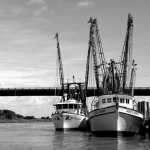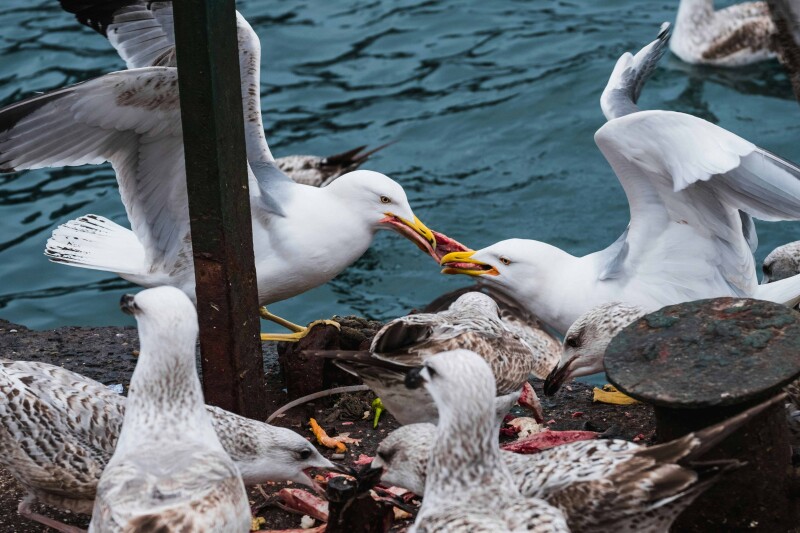Fishers use a variety of techniques and gear to pursue target fish and shellfish. “Commercial fishing” is defined in the Magnuson-Stevens Fishery Conservation and Management Act as “fishing in which the fish harvested, either in whole or in part, are intended to enter commerce or enter commerce through sale, barter, or trade.” Fisheries bycatch is the accidental hooking, entanglement, or other incidental take or capture of non-target species, including migratory birds, resulting from fishing activities.
Many seabirds have low reproductive rates, undergo long and strenuous migrations, face multiple threats over their large geographic ranges, and associate with fishing vessels while foraging, making their populations particularly vulnerable to mortality from fishing gear.
How do commercial fisheries impact migratory birds?
The primary way birds interact with commercial fisheries is direct bycatch by active fishing gear or fishing gear that has been lost, abandoned, or discarded in the environment. Interactions can also occur when baited hooks are easily accessible to birds, putting them at risk for being hooked or ensnared as they pursue the bait. Furthermore, fishing vessels provide food resources to birds by discarding fish waste and offal. Birds can also collide with fishing vessels, particularly in low visibility conditions.







